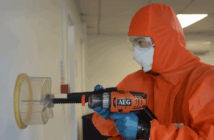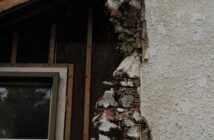Businesses must now take greater responsibility for managing asbestos in their place of work

On 4 April, the two-year window for industry, the regulator and training partners to implement changes created by the Health and Safety (Asbestos) Regulations 2016 expired.
This means that the requirements in the Asbestos Regulations around managing the risks of asbestos are in full force.
This includes the requirement for asbestos management plans and greater competency requirements on the asbestos removal industry.
The regulations are about raising the bar for the removal industry and bringing New Zealand’s approach to managing asbestos in the workplace and any associated removal in line with Australia and the UK.
How did the new regulations come about?
Asbestos, because of its incredible range of properties, was added into numerous building products from the 50s to the 80s.
However, it was later discovered to be a carcinogen when the fibres get lodged in human lungs.
To help reduce worker exposure to this carcinogen, the government introduced the new Health and Safety (Asbestos) Regulations in 2016.
These regulations strengthened the requirements on the asbestos removal industry through training and by implementing a system of checks and balances, such as practice checks by inspectors and a requirement that class A removalists have a certified safety management system.
What’s changed?
Certificate of Competence holders
Recognised Certificate of Competence holders as equivalent to licensed removalists until 4 April.
Certified safety management systems
Requiring businesses seeking a class A licence to have a certified safety management system in place by 4 April.
Certification of safety management systems
Air monitoring
Air monitoring and clearance of class A removal sites must be undertaken by an independent licensed assessor from 4 April. Clearance of class B sites and air monitoring, where required, can be done by a licensed assessor or a competent person.
Key duties for surveyors and assessors
Training
Requiring workers and supervisors to be trained with either the relevant unit standards or their equivalent CPCC course (Australian courses which are recognised under the Trans-Tasman Mutual Recognition Act).
Asbestos management plans
Requiring businesses where asbestos has been identified, or is likely to be, or where the PCBU ought to know that it is present, to develop an asbestos management plan.
Great guides
WorkSafe has produced four new asbestos quick guides to help tradesmen deal with the country’s number one workplace killer.
If you are a plumber, builder, electrician or a painter take note as we have just launched four new quick guides so that you can quickly understand your responsibilities and how to manage the risks when working with or near asbestos.
The guides are for designed for tradespeople who work for themselves or have other people (including apprentices) working for them.
Each guide is a one-stop information resource that covers:
- the risk of working with or near asbestos
- the difference between friable and non-friable asbestos
- where asbestos is likely to be found in New Zealand homes and other buildings
- the key ways to protect yourself when working with asbestos
- how to dispose of asbestos waste
- workers’ rights and responsibilities
Licence Conditions
Those who have yet to provide all the training details or evidence of their safety management system, should provide it to asbestos@worksafe.govt.nz as soon as possible.
WorkSafe will, if not already, be in touch to discuss meeting the conditions of those who have outstanding conditions to meet.
It is important anyone undertaking work uses supervisors and workers who have the appropriate training.
Carrying out work with using workers or supervisors without the required training may result in enforcement action.



